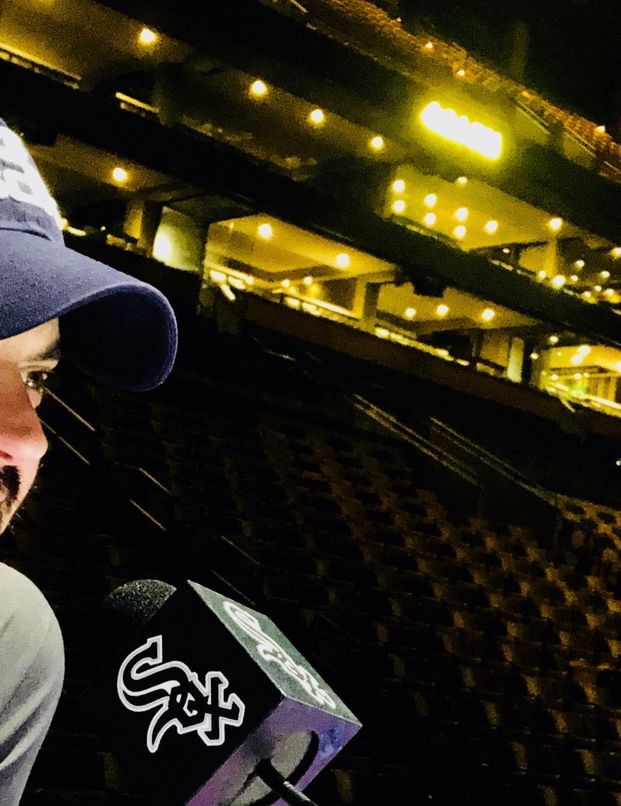Kevin Glendinning wears two very high-profile audio hats: on the one hand, he is an acclaimed and respected monitor engineer, whose artist roster includes Alicia Keys, Justin Timberlake, Maroon 5, and Paul Simon; and when he’s not flying faders for these superstars, he’s heading up artist relations for industry-leading in-ear monitor manufacturer, JH Audio. I sit down with him in New York City, where he’s currently working a theatre run for Idina Menzel, to find out more about the man behind the console.
Glendinning was a drummer in a punk band in the mid-90s, growing up around the Chicagoland area. Seeing as he was the only one in his band with a job, and was looking after the limited budget, he threw the cash they made back into the audio gear. Tech-minded from the start, then?
“Yeah, but I had zero clue what I was doing once I stepped off the drum kit, so to say there was a learning curve is putting it mildly,” Glendinning smiles. “The band splayed away, and folks went off to college, and I inherited the stacks and racks, as well as the monitor system. I was a big fan of Metallica at the time, and wore out a VHS copy of a tour doc they had. In the credit, it listed ‘tour sound provided by db Sound, Des Plaines, IL.’
“Their shop was about four blocks from where my father worked, and he drove by to have a gander. I’d heard about db, as they were local, and had massive high-profile accounts like The Rolling Stones, Smashing Pumpkins, AC/DC, and Metallica - basically, my mix tape roster at that time!”
Glendinning got himself a Hotmail account, and emailed the company president, Harry Witz. That door got opened, and he’s never looked back since. Within a few months, in fact, he found himself out with Metallica flying PA, and helping with the stage rigs. This was Summer 2000.
“Talk about luck, huh?” he laughs. “Both Harry [Witz] and db are now under the Clair Global family in Lititz, PA. I ended up bouncing literally off of one tour bus to another: Metallica, to AC/DC, to The Rolling Stones. I had a good run being a company man, and got to stand behind some solid A-level monitor guys, who showed me a lot along the way. I left db, moved to Maui, and became an independent monitor man. I then got lucky once again with some gracious folks in Southern California, including Dave Rat and Dave Shadoan, and started to make a name for myself with management shops, as well as North American and UK audio vendors.”
I ask Glendinning if he would recommend this ballsy approach, in terms of reaching personal goals, to others.
“Sure. Hard work, lots of missed family time sacrifices, and having the ability to sleep anywhere at any time, and he or she may have a shot at ‘getting there’,” he says. “Oh, and learn your frequencies – 20Hz to 20KHz; that is paramount. That should happen before anyone steps up to a console.”
As we chat, we realise we met almost five years to the day, when Glendinning was working monitors for Maroon 5 at London’s O2 Arena. He’s had quite the fairytale relationship with those guys; they went from playing college gymnasiums, to filling stadiums, and flying by private jet.
“It’s fun to see that growth and success happen like that,” he reflects. Are all artist relationships as gratifying? “Well, over the years, I have had it quite close and personal, and other times, gone weeks without he or she even knowing my name, or who I was on the crew.
“Every account, every tour, every band - they all have their own unique ways of touring. It’s about adapting, and not taking it too personally if it takes someone six months to learn your name. For me, the pre-show interaction is not nearly as important as post-show. I always like to get in the dressing room, wrap up IEMs, and just catch some notes from the artists - good or bad - take them both, and have honest answers. It’s the music business; these people have heard enough nonsense BS, and you’ll be better respected for a direct answer, whether that is good or bad.
“Dave Shadoan told me once when I was struggling a bit with my crew on No Doubt in 2006: ‘Everything that happens up there is on you. You’re the captain of the ship, you take charge, and make sure you’re aware of everything that is happening.’ I always remembered that.”
I ask Glendinning what his stand-out moments have been from the last 20 years on the road.
“The Rolling Stones, where I was assistant monitor engineer, was pretty mind-boggling; being that young, and that integral a part on that massive show with so much going on with regard to stage audio. And [Justin] Timberlake was by far the most ‘fun’, and the easiest on the mixing side of things. I had him on his own console - left and right ears, and that was it - like mixing PA on the stereo buss. But I’d say the best tour would be Alicia Keys. She just has this way about her; it’s hard to describe, but it’s all please and thank you, start to finish. We had a full plate as far as mix duties, but everything always seemed calm and


